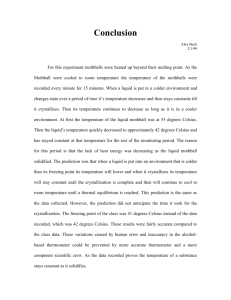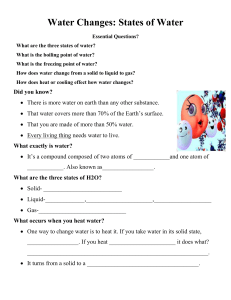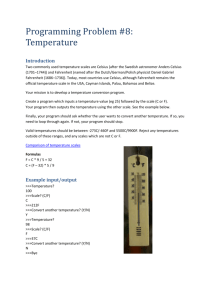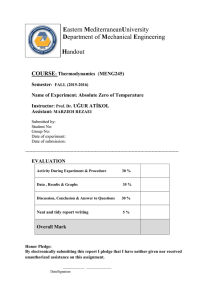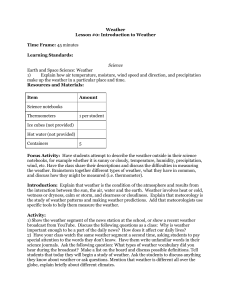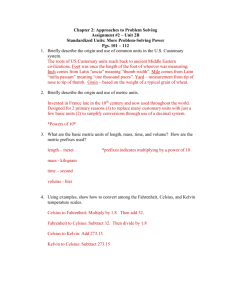Exploring Heat Video Notes KEY / Uploaded File
advertisement
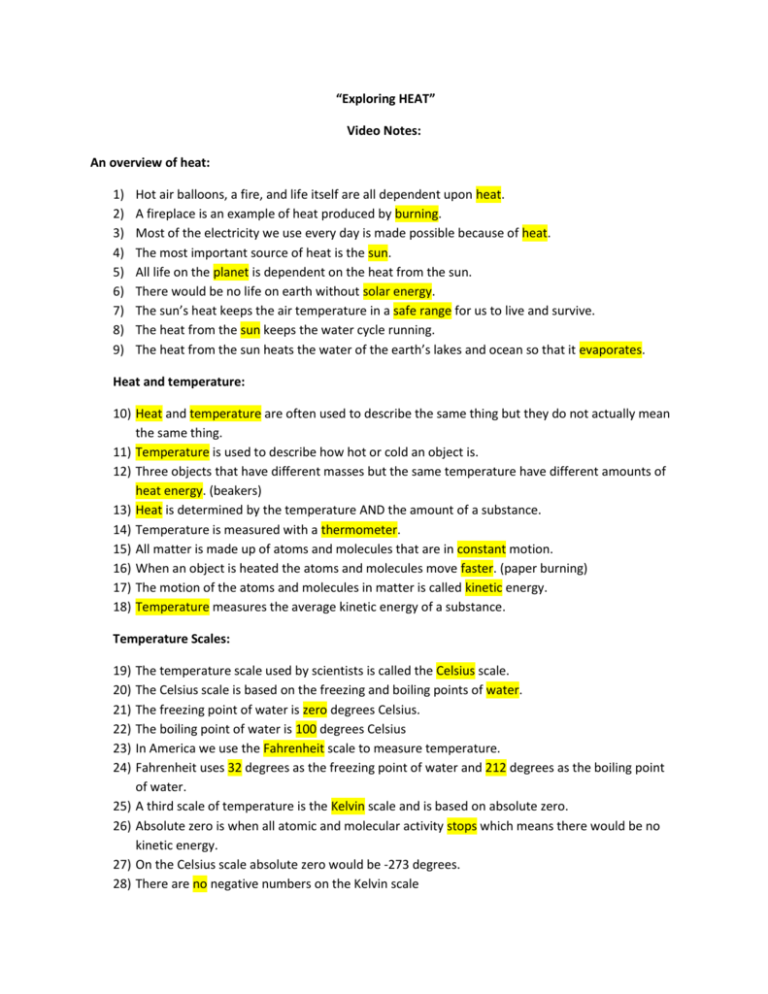
“Exploring HEAT” Video Notes: An overview of heat: 1) 2) 3) 4) 5) 6) 7) 8) 9) Hot air balloons, a fire, and life itself are all dependent upon heat. A fireplace is an example of heat produced by burning. Most of the electricity we use every day is made possible because of heat. The most important source of heat is the sun. All life on the planet is dependent on the heat from the sun. There would be no life on earth without solar energy. The sun’s heat keeps the air temperature in a safe range for us to live and survive. The heat from the sun keeps the water cycle running. The heat from the sun heats the water of the earth’s lakes and ocean so that it evaporates. Heat and temperature: 10) Heat and temperature are often used to describe the same thing but they do not actually mean the same thing. 11) Temperature is used to describe how hot or cold an object is. 12) Three objects that have different masses but the same temperature have different amounts of heat energy. (beakers) 13) Heat is determined by the temperature AND the amount of a substance. 14) Temperature is measured with a thermometer. 15) All matter is made up of atoms and molecules that are in constant motion. 16) When an object is heated the atoms and molecules move faster. (paper burning) 17) The motion of the atoms and molecules in matter is called kinetic energy. 18) Temperature measures the average kinetic energy of a substance. Temperature Scales: 19) 20) 21) 22) 23) 24) 25) 26) 27) 28) The temperature scale used by scientists is called the Celsius scale. The Celsius scale is based on the freezing and boiling points of water. The freezing point of water is zero degrees Celsius. The boiling point of water is 100 degrees Celsius In America we use the Fahrenheit scale to measure temperature. Fahrenheit uses 32 degrees as the freezing point of water and 212 degrees as the boiling point of water. A third scale of temperature is the Kelvin scale and is based on absolute zero. Absolute zero is when all atomic and molecular activity stops which means there would be no kinetic energy. On the Celsius scale absolute zero would be -273 degrees. There are no negative numbers on the Kelvin scale Measuring Heat: 29) Heat is not measured with a thermometer or with degrees. Measuring heat units: 30) The calorie: the amount of heat needed to raise the temperature of one gram of water one degree Celsius – food energy is measured with this unit 31) For example, when you read a food label on a can of soup you read that the soup gives you 90 calories of food energy. 32) You base your diet on how many calories of food energy you need each day. 33) The standard unit used to measure energy is the joule. Remember energy is the ability to do work. 34) One calorie equals 4.18 joules. 35) Another way to measure heat energy is the BTU – British thermal unit. 36) When you talk about the energy used by the stove in your kitchen it is measured in BTU’s. A home stove has an average of 7000 BTUs per burner. 37) America uses BTU while other countries use joules. 38) One gallon of gasoline equals 124 BTU Expansion and contraction: 39) 40) 41) 42) 43) When most objects are heated they expand or get bigger. Wires between telephone poles sag and are not pulled tight. Endothermic – add heat Exothermic – remove heat Wood used for handles on pots and pans because it is a poor conductor of heat. 44) Heat moves from warm areas to cold areas. 45) We heat our homes and keep the windows shut to keep the heat in not to keep the cold out.
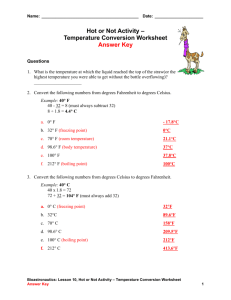

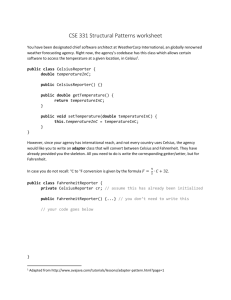
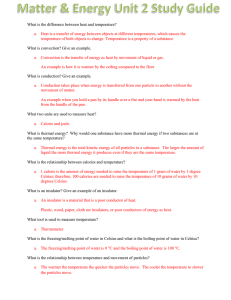
![Temperature Notes [9/22/2015]](http://s3.studylib.net/store/data/006907012_1-3fc2d93efdacd086a05519765259a482-300x300.png)
